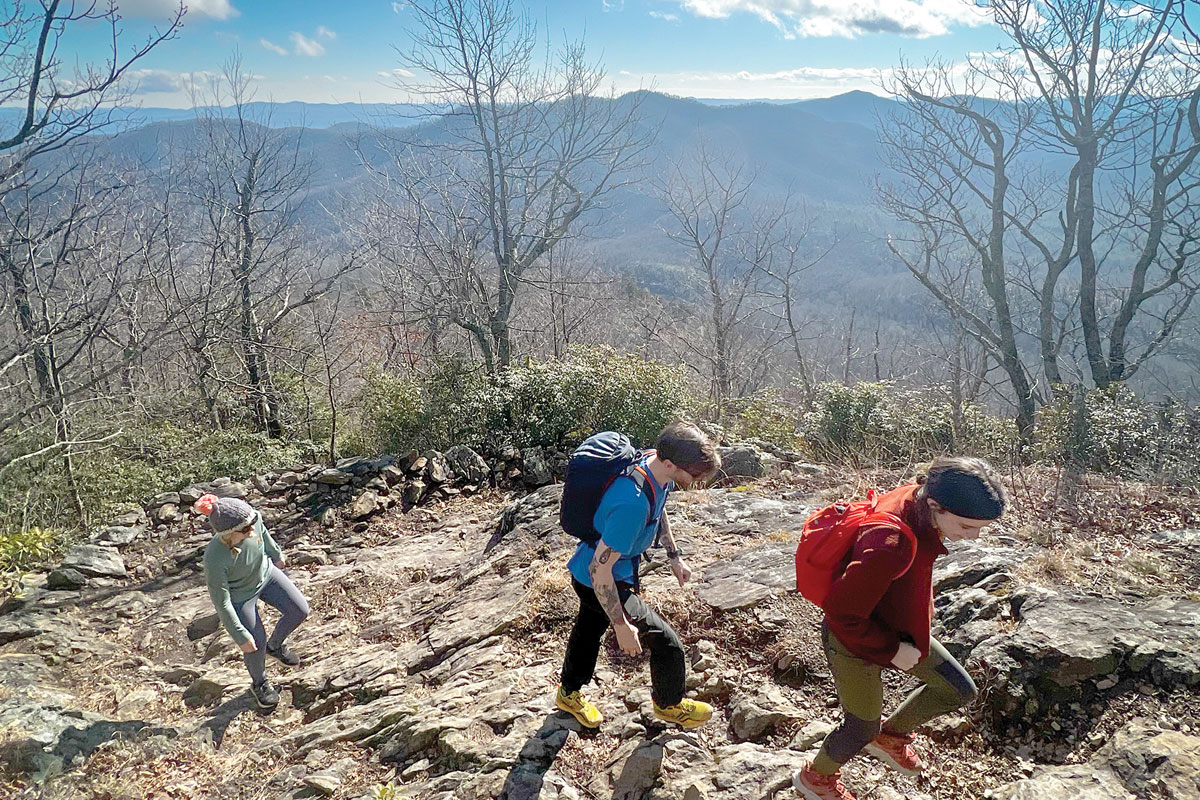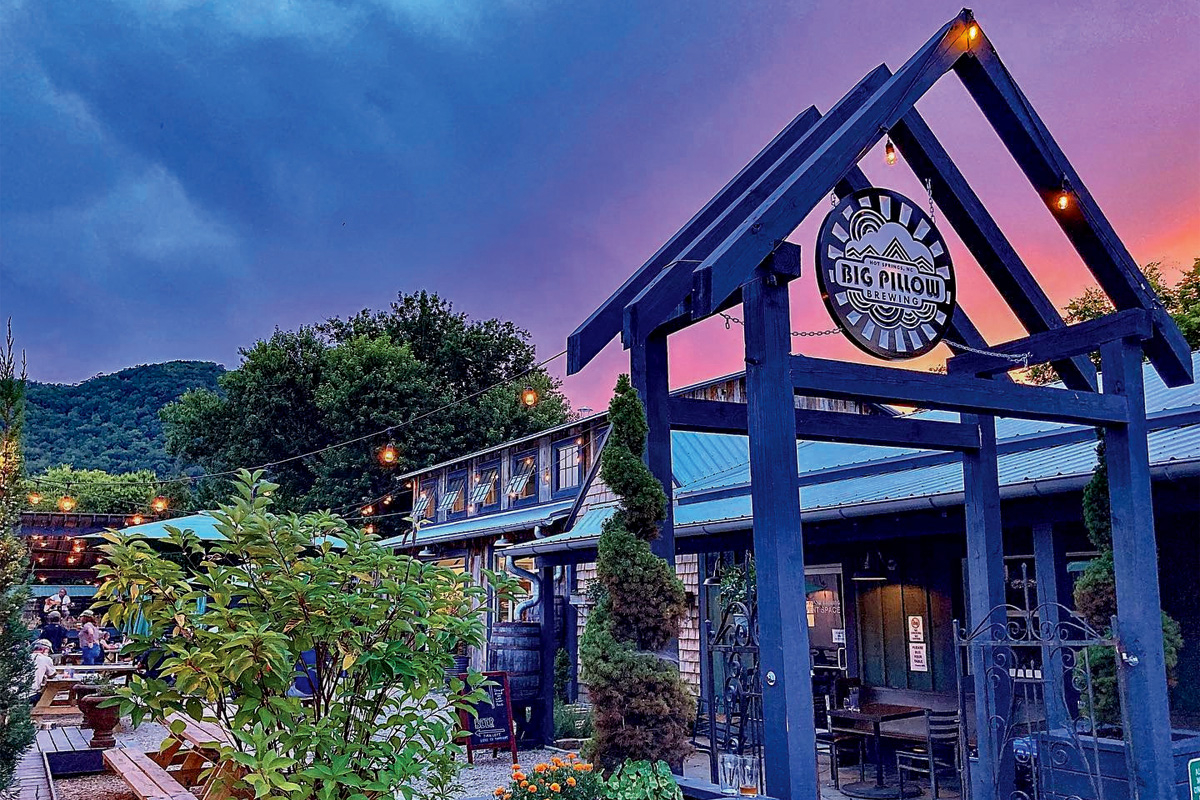Speech by civil rights educator begins WCU’s celebration of Martin Luther King
The Rev. Jamie Washington, social justice educator and president of a Baltimore-based multicultural organizational development firm, will be the keynote speaker for Western Carolina University’s annual celebration in honor of slain civil rights leader Martin Luther King Jr.
Founder of the Washington Consulting Group and a senior consultant with the Equity Consulting Group of California and Elsie Y. Cross and Associates of Philadelphia, Washington will speak at 7 p.m. Wednesday, Jan. 19, in the Grandroom of A.K. Hinds University Center as part of a program sponsored by the Office of the Chancellor.
He will discuss the nation’s progress in the area of civil rights and race relations, and what additional steps are necessary to achieve King’s vision in a talk titled “Beyond the Dream to the Vision: The Charge for the Next Generation.” A reception will follow the address.
Washington has served as an educator and administrator in higher education for more than 20 years, most recently as assistant vice president for student affairs at the University of Maryland-Baltimore County. He holds a doctorate in college student development with a concentration in multicultural education from the University of Maryland College Park, and earned his master’s degree in divinity at Howard University in 2004.
Other events planned at WCU as part of the King celebration range from service activities to cultural events.
The exhibition “With All Deliberate Speed: School Desegregation in Buncombe County” will open at 8 a.m. Monday, Jan. 17, on the second floor of Hinds University Center. The 15-panel exhibit explores the events, legislation and actions of people that led to the desegregation of Buncombe County from the 1950s to the present time, and will highlight the students of ASCORE (Asheville Student Committee on Racial Equality) who worked to integrate schools and businesses in Western North Carolina in the 1950s and 1960s.
A unity march also is planned for 4:30 p.m. Jan. 17, followed by a reception to mark King’s 82nd birthday, to be held in the theater of the University Center.
The film and discussion “Our Friend Martin: An Adventure Inspired by Martin Luther King Jr.” is set for 6 p.m. Tuesday, Jan. 18, in the University Center theater.
The Koresh Dance Company will perform at 7:30 p.m. Thursday, Jan. 20, at the Fine and Performing Arts Center. Known for its powerful stage presence and high-energy style, the company presents a combination of ballet, modern and jazz dance. Tickets are $5 for the event, part of the 2010-11 Arts and Cultural Events Performance Series at WCU. For tickets, call 828.227.2479 or visit the FAPAC box office.
A poetry slam will be held at 6 p.m. Jan. 20 in the Starbucks coffee shop in the Courtyard Dining Hall.
In addition, days of service will be held Jan. 17 and Saturday, Jan. 22. Participants should register through the Center for Service Learning website, servicelearning.wcu.edu.
University administrative offices will be closed Jan. 17 in observance of the Martin Luther King Jr. holiday.
For more information, contact James Felton, director of intercultural affairs, at 828.227.2924.
Pride of the Mountains is California-bound
Nearly 400 members of Western Carolina University’s Pride of the Mountains Marching Band will travel to Pasadena, Calif., to march in the internationally televised 2011 Rose Parade.
The band is scheduled to appear at the 49th position in the parade, which begins at 11 a.m. on Jan. 1.
“The Rose Parade is seen by millions of people from around the world, and the Pride of the Mountains will be serving as marching musical ambassadors for Western Carolina,” said Bob Buckner, director of the WCU Pride of the Mountains Marching Band. “It’s a role we accept as a high honor, and we are ready to take on the challenges — both logistical and financial — of transporting our students, their instruments and other equipment to California.”
Three trucks will carry the band’s instruments, uniforms, equipment and even band member’s luggage to California in order to save about $40,000 in checked baggage fees. Students loaded the trucks Monday, Dec. 20, and will fly to California starting Dec. 28.
At the Tournament of Roses Bandfest on Thursday, Dec. 30, which friends, family and fans can watch online via a webcast available for $8.50, the band will perform its halftime show “Rock U.”
During the Rose Parade, the band will perform the song “You” by California ska band Suburban Legends, a local favorite in Orange County. Matt Henley, assistant director of the WCU marching band, said the music selection came about as he was thinking about the parade’s theme, “Building Dreams, Friendships and Memories,” and remembered a story about Suburban Legends.
After a member of the group, trombone player Dallas Cook, died in a traffic accident, Suburban Legends held a memorial concert and directed proceeds to Cook’s high school marching band in Huntington Beach, Calif. Cook had credited his experience in high school band for much of his passion for music.
Moved, Henley contacted Suburban Legends about the possibility of playing the group’s song in the parade and building a friendship.
“We love Suburban Legends’ music, and we are excited to play their song ‘You’ in Dallas’ memory and send the message that, like him, we love band too,” said Henley. “We arranged the song for marching band, and that is what we will play on TV as we go around the corner in the parade. Part of our goal was to build a friendship from East Coast to West Coast, and we hope to get the chance to meet members of Suburban Legends while we are there.”
Band members have said they are both excited and nervous to perform in front of so many people. More than 700,000 are expected to attend the parade, and more than 51 million people are expected to watch the internationally televised event on TV.
“I’m actually marching in the Rose Bowl (which will be) watched by a billion people. That is a lot of stress. A lot of eyes would be on me if I fall or trip,” said Candace Rhodes, a freshman music education major from Georgia, in a video she submitted in a WCU video contest, before willing it not to go wrong. “It won’t happen. It won’t happen. It won’t happen.”
When Jeffrey Throop, president of the Tournament of Roses Association, visited WCU’s band in September, he predicted the Pride of the Mountains would be a hit in California.
“I can already tell, you are going to blow everybody away. It’s just so exciting to see you and to see your style. I’ve never seen anything like it,” said Throop, who has observed more than his fair share of marching bands during his affiliation of 36 years with the Rose Parade. “I can’t wait to show you off to everyone, to the world.”
Follow the Pride as they travel to Pasadena at roseparade.wcu.edu.
WCU tuition increase poses financial problems for students
A tuition hike spells additional hardships for many students at Western Carolina University, at least those who already find it difficult to scratch up the dollars needed to obtain a college degree.
“I’m sure it’s going to be hard on many of them,” said Seth McCormick, who teaches art history.
And on a recent weekend in Cullowhee, a group of students who also double as Subway Restaurant employees agreed. Most of their fellow students were gone from campus. Exams finished, they’d headed home for the holiday break. But not Carrie Collins of Pilot Mountain, or Bethanne Bentley of Raleigh — they were hard at work, earning money to help pay their way through school.
“It will be difficult to come up with,” Collins said of the additional 4.45 percent she will pay for the 2011-12 academic year.
That translates to an additional $471.20 a year for typical N.C. undergraduates who are living on campus and receiving the most-popular meal plan. The total cost for these students each year will be $11,055. Tuition alone for these students would be $3,048 per year, up $232.20.
Collins, a hospitality and tourism major, who described herself as a “super-duper” junior (which she defined as meaning she’s stayed a junior for more time than anticipated), said she’d probably be forced to seek even more help via student loans.
Fortunately, Collins said, books are included in the tuition fees at WCU.
North Carolina is faced with a $3.7 billion shortfall. Cuts are trickling down to universities and other state institutions. The WCU Board of Trustees approved the tuition hike Dec. 8.
Trustees Vice Chairman Charles Worley said in a prepared news release the “only hope we have of maintaining the academic core, or at least minimizing the hurt, is with this tuition increase.”
Bentley said she feels fortunate she will only be going to school part-time next semester. She lives off campus, and believes her goal of becoming a social worker is still reachable.
The increase came as a jolt to one of WCU’s newest students. Freshman Corvin Parker, a Raleigh resident who was buying lunch at Subway, said the tuition hike served as something of a spur.
“It makes me think I want to buckle down,” Parker said.
There are other increases coming, as well. WCU is seeking permission from the University of North Carolina system to also:
• Increase the athletics fee by $71, from $617 to $688.
• Add $24 to the education and technology fee, from $363 a year to $387.
WCU, Forest Hills continue hammering out Town Center concept
Looming budget cuts to the state’s higher education system won’t interfere with Western Carolina University’s goal of creating a town to call its own, the man tasked with drawing up a project agreement said this week.
Tom McClure, director of the office of partnership development for the WCU Millennial Initiative, also said if the project for a Town Center moves forward it would be on the financial back of a yet-unidentified private developer. Not, he said, through or at the expense of the university or state.
North Carolina is facing a $3.7 billion shortfall. Budget cuts are expected to extend to the University of North Carolina system, which includes WCU. In anticipation, the cost of attending the university would increase 4.45 percent for the 2011-12 academic year under a plan approved this month by the WCU Board of Trustees.
McClure debunked any idea that the Town Center concept would lose steam because of the departure of Chancellor John Bardo. The chancellor, who developed and spearheaded the possibility of developing 35 acres on WCU’s main campus, announced he would retire next summer.
Key to the Town Center moving forward is whether the Village of Forest Hills agrees to annex the land. Cullowhee is not currently incorporated as a town, and as a result, stores and restaurants can’t sell beer, wine or liquor drinks. That has proved a major stumbling block in attracting commercial ventures typically associated with a college town.
Nearby Forest Hills consists of fewer than 400 residents. Most are current or retired faculty and staff of the university. The town incorporated in 1997, mainly to prevent an influx of students from taking over the community.
What’s in a name?
A draft agreement between WCU and Forest Hills obtained last week by The Smoky Mountain News calls for a referendum on mixed drinks, beer and wine if the tiny incorporated community moves forward with the plan.
The letter of intent also suggests Forest Hills would lose its name for that of the “Town of Cullowhee.” And that it would adopt a “mutually acceptable mixed-use zoning district ordinance based on an initial draft provided by WCU.”
WCU Chancellor John W. Bard sent the letter, dated Dec. 6, to Jim Wallace, mayor of Forest Hills.
Wallace said this week he’s hoping fellow Forest Hills leaders give the project a green light.
“I myself think it would be extremely good for the community and the Village of Forest Hills,” he said. “But we don’t know the details yet. And I don’t vote.”
Wallace said council members would review the draft “paragraph by paragraph” at its upcoming January meeting.
Bardo, in the draft, noted: “The purpose of this letter of intent is to provide the framework for negotiations between WCU and Forest Hills regarding a proposed transaction, and outline material terms and the basis upon which a definitive development agreement may be negotiated and prepared for execution by Forest Hills and WCU.”
The development agreement would be for 20 years unless the two parties mutually agreed to terminate the bargain.
“The Town Center may involve construction of up to 2 million square feet of building space. … Building space currently contemplated includes, without limitation, general retail business, residential space, food services business and entertainment business. The parties agree that large, ‘big box’ retail establishments will not be permitted in the Town Center,” the letter states.
Not everyone thrilled with WCU idea
Robin Lang, Cullowhee businessperson and community advocate:
“I was shocked to read WCU presented Forest Hills its proposal for a ‘Town Center.’ The nerve to call it a ‘Town Center.’ … A ‘Town Center’ without free enterprise? Chancellor John Bardo stated at the first meeting with Forest Hills that the square-footage prices would be too high for a local business to afford. A ‘Town Center’ where within only alcohol sales are allowed? How will our small business community fairly compete with that? Let’s get a countywide alcohol referendum on the next ballot and take a vote. Level the playing field or we will watch more of our local family businesses go under and fold at the mercy of corporate entities and the university once again.
“What about our economic climate? To create service jobs? For whom? The people the university and Forest Hills put out of business? Maybe for the faculty and staff they lay off next year due to the extreme budget cuts. Our community doesn’t need more underemployment. … Is the fate of Cullowhee and Jackson County allowed to lie only in the hands of WCU, the 400 residents of Forest Hills and its board members? The rest of the community, the vested taxpaying, property-owning community needs representation and has a right to a voice.
“What concerns me most is when I think about connecting all the dots of recent events. Our new county commissioners ran on the Tea Party ticket, which professes that people take back their government. Yet the new commissioners have set Mondays at 2 p.m. for their public meetings, which will exclude most of the pesky working public. … I’m concerned that neither WCU nor Forest Hills made this document public. This is public information. ... What else are they thinking and not telling us?”
Read the draft agreement at www.smokymountainnews.com/multimedia/FOREST_HILLS_DRAFT.pdf
SMN obtains draft agreement between WCU, Forest Hills
A draft agreement between Western Carolina University and the Village of Forest Hills calls for a referendum on mixed drinks, beer and wine if the tiny incorporated community agrees to help create a new “Town Center” for its large neighbor.
The letter of intent, obtained Friday by The Smoky Mountain News, also suggests Forest Hills lose its name for that of the “Town of Cullowhee,” and it adopt a “mutually acceptable mixed-use zoning district ordinance based on an initial draft provided by WCU.”
WCU Chancellor John W. Bard sent the letter, dated Dec. 6, to Jim Wallace, mayor of Forest Hills.
“The purpose of this letter of intent is to provide the framework for negotiations between WCU and Forest Hills regarding a proposed transaction, and outline material terms and the basis upon which a definitive development agreement may be negotiated and prepared for execution by Forest Hills and WCU.”
The development agreement would be for 20 years unless the two parties mutually agreed to terminate the bargain.
“The Town Center may involve construction of up to 2 million square feet of building space. … Building space currently contemplated includes, without limitation, general retail business, residential space, food services business and entertainment business. The parties agree that large, ‘big box’ retail establishments will not be permitted in the Town Center,” the letter states.
WCU wants to develop 35 acres on its main campus. The university’s desire to create a commercial hub and vibrant college town hinges on Forest Hills. Cullowhee is not currently incorporated as a town, and as a result, stores and restaurants can’t sell beer, wine or liquor drinks. That has proved a major stumbling block in attracting commercial ventures typically associated with a college town.
Forest Hills consists of fewer than 400 residents. Most are current or retired faculty and staff of the university. The town incorporated in 1997, mainly to prevent an influx of students from taking over the community.
Discussions about some combination of a merger and annexation have come to the forefront since summer. A group called the Cullowhee Revitalization Endeavor (CuRvE) formed almost three years ago and began looking at ways to bring life to the community surrounding the WCU campus. CuRvE opened talks with Forest Hills this summer, and now the university and the town are talking directly to each other about the possibilities for creating a new town.
This group might have some bite — watchdog group formed to monitor WCU
It just wouldn’t be the Jackson County we’ve all come to know and love if there wasn’t some kind of community-action group watchdogging Western Carolina University’s attempts to create its very own incorporated town.
But it’s Jackson County, so of course, there’s now such a group — with the working name of the Cullowhee Coordinating Committee.
“The school, in the past, has behaved as if this is Cullowhee,” Robin Lang, the group’s spokeswoman, said one day last week, gesturing toward the university.
But, she argued, that’s not all of Cullowhee. The people who live in the area are Cullowhee, too. So are the local businesses, and the many people who have invested time and emotional energy into the university and into the area around WCU. All of these people and institutions, Lang said, deserve to be heard before something is done to change what they claim as theirs, too.
Some issues the group might look into:
Possible legal sales of alcoholic beverages — how will local restaurants compete if they can’t do the same? Are there Cherokee archaeological sites? Any Indian burials around WCU, or perhaps an old village or two? Environmental questions also abound — does the proposed Town Center have wetlands within its 35-acre tract, like some are claiming gave way during the building of the Ramsey Center? Are there ways to accomplish revitalization goals along Old Cullowhee Road without annexation?
A bit of background.
WCU, under the leadership of Chancellor John Bardo, is attempting to pair with its tiny neighbor, the 1997-incorporated Village of Forest Hills, to create a college town that would probably be called Cullowhee. Forest Hills is made up of fewer than 400 residents, most being current or retired faculty and staff of the university. (In an interesting twist of irony, the Village of Forest Hills — which has no town hall or services to speak of, though it does contract some police protection — incorporated for one simple reason: to stave off students from taking over the community.)
WCU wants Forest Hills to voluntarily annex university land as the town center. There, Bardo has said, there would be commercial development, with leases extended to restaurants, bookstores, coffee shops and such, as well as condos and a few university offices. That vision has not included much in the way of local businesses — franchise restaurants have been mentioned, not such campus fixtures as the Mad Batter Bakery and Café or its ilk.
WCU bought 2.2 acres on Centennial Drive in January 2007 that houses the Mad Batter, a Subway sandwich shop, and several other commercial businesses.
Forest Hills Mayor Jim Wallace indicated last month that town aldermen were expecting to receive information from WCU soon on how the town could best accommodate a mixed-use land plan.
Tom McClure, director of the office of partnership development for the WCU Millennial Initiative, said there are some “internal discussions” taking place, and that it could be a matter of weeks before the necessary documents are ready for review.
McClure said he has prepared a draft, but that it is not yet ready for review. McClure said a 20-year or more development agreement is key. A “planned-unit development” would eliminate the need for each new business involved to get individual approval from the town.
Chancellor John Bardo has said WCU will ask town leaders to adopt wholesale the university’s design for a town center.
WCU’s desire to create a commercial hub and vibrant college town hinges on its tiny neighbor. Cullowhee is not currently incorporated as a town, and as a result, stores and restaurants can’t sell beer, wine or liquor drinks. That has proved a major stumbling block in attracting commercial ventures typically associated with college towns.
Get involved
The next meeting of the Cullowhee Coordinating Committee will be Thursday, Nov. 18, at 2 p.m. in WCU’s Honors College conference room. The meeting will last an hour.
Forest Hills in holding pattern on WCU annexation
A timetable is still being hammered out on when Forest Hills leaders will receive a formal proposal from Western Carolina University on annexing land for a commercial development.
WCU wants to develop 35 acres of its main campus into a “town center,” which would be leased to restaurants, bookstores, coffee shops and the like, as well as condos and a few university offices. Forest Hills has been asked to annex the land into its town limits.
Forest Hills Mayor Jim Wallace indicated last month that town aldermen were expecting to receive information from WCU soon on how the town could best accommodate a mixed-use land plan.
Tom McClure, director of the office of partnership development for the WCU Millennial Initiative, said there are some “internal discussions” taking place, and that it could be a matter of weeks before the necessary documents are ready for review.
McClure said he has prepared a draft, but that it is not yet ready for review. McClure said a 20-year or more development agreement is key. A “planned-unit development” would eliminate the need for each new business involved to get individual approval from the town.
Chancellor John Bardo has said WCU will ask town leaders to adopt wholesale the university’s design for a town center.
WCU’s desire to create a commercial hub and vibrant college town hinges on its tiny neighbor. Cullowhee is not currently incorporated as a town, and as a result, stores and restaurants can’t sell beer, wine or liquor drinks. That has proved a major stumbling block in attracting commercial ventures typically associated with college towns.
The Village of Forest Hills consists of fewer than 400 residents. Most are current or retired faculty and staff of the university. The town incorporated in 1997, mainly to prevent an influx of students from taking over the community.
Clark Corwin, a council member for Forest Hills, said he would like to see his town receive extensive feedback from residents before any decisions are made. This includes, he said, whether to allow alcoholic beverages to be sold.
He said Southwestern Development Commission, a state regional planning and development organization, offers a tidy process through the Mountain Landscapes Initiative that might work well for Forest Hills. A toolbox has been developed offering best practices and guidelines for sustainable growth.
“I think everyone is of a mind to have a public forum, but I want something more than just a public hearing,” Corwin said.
Mountain Heritage Day to offer continuous entertainment, new Children’s Tent
The talents of Western North Carolina’s top traditional musicians and singers will be showcased during the 36th annual Mountain Heritage Day, coming up Saturday, Sept. 25, on the campus of Western Carolina University.
The festival’s newly named “Mountain” and “Heritage” stages will feature 22 separate musical acts that will provide constant free entertainment from 10 a.m. to 5 p.m., said festival coordinator Trina Royar.
“Our schedule of performers for the two stages includes bluegrass, old-time music, bluegrass-gospel, traditional Irish music, traditional and contemporary folk, and traditional country. If you like music in the ‘traditional’ genre, we’ve got you covered,” Royar said.
The entertainment lineup includes regional bluegrass favorites Balsam Range, Whitewater Bluegrass Co., Buncombe Turnpike and the Stoney Creek Boys, as well as the traditional and contemporary folk sounds of Phil and Gaye Johnson, old-time music by Jackson County’s Queen and Deitz families, and the Red Wellies, a traditional Irish band from Asheville.
Also, Mountain Heritage Day will feature four clogging teams, with two teams performing on each stage, Royar said.
Other musical performances are scheduled at the festival’s Circle Tent, a venue designed to provide visitors with a workshop kind of experience, Royar said. The Banjo Circle will feature area banjo pickers Mark Pruett, Junior Queen and Steve Sutton. The Fiddle Circle will highlight the talents of Trevor Stuart, Delbert Queen, Danielle Bishop, Beanie O’Dell and Arvil Freeman, and the Mandolin Circle will feature Adam King, Danny Bishop, Barry Clinton and Darren Nicholson. WCU’s own student group, the Porch Music Club, will lead an open jam at the Circle Tent at 3:30 p.m.
While the music and dancing is going on at the two main stages and in the Circle Tent at Mountain Heritage Day, a new performance area, the Children’s Tent, will offer younger festival visitors a wide range of activities, Royar said.
WCU’s 36th annual Mountain Heritage Day set for Saturday, Sept. 25
The traditional folkways of the Southern Appalachian Mountains will once again take center stage as the Western Carolina University community presents the 36th annual Mountain Heritage Day on Saturday, Sept. 25.
WCU’s annual festival offers a smorgasbord of traditional mountain culture, with a variety of music, dance, crafts, folk arts, contests and activities that is hard to find in a one-day event, said festival coordinator Trina Royar of WCU’s Mountain Heritage Center.
All Mountain Heritage Day activities, including stage performances, will take place between 10 a.m. and 5 p.m., with the exception of the 5-K footrace, which begins at 8 a.m., and registration for the woodcutting contest, which starts at 9 a.m. This year’s festival will be held on fields behind the Cordelia Camp Building, in parking lots and grassy areas around the Camp Building, and in the nearby Mountain Heritage Center, which is located on the ground floor of H.F. Robinson Administration Building.
Each year’s Mountain Heritage Day is the result of months of planning and work by a host of volunteers representing WCU’s student body, faculty and staff, and all that activity culminates with a busy festival day on the last Saturday in September, Royar said. “In particular, the event requires a big commitment by the university’s police force and facilities management department, but the payoff comes for everyone involved with the festival when they see the big crowds and smiling faces at WCU’s largest one-day event,” she said.
See also: Mountain Heritage Day to offer continuous entertainment, new Children’s Tent
Arts, crafts and food
Visitors at this year’s Mountain Heritage Day will find 80 booths of juried arts and crafts, providing a perfect opportunity for local residents to get in some early holiday shopping, Royar said. Items for sale will include everything from ceramics and wood carvings to basketry, jewelry and metalwork. Beginning this year, the layout of the arts and crafts vendor area has been redesigned to provide for a more pleasant shopping experience, with each vendor having a “corner” booth with two open sides. Fifty-nine percent of the arts and crafts vendors at this year’s festival are from Buncombe and other N.C. counties to the west, Royar said.
About 20 food vendors also are scheduled to participate in the festival, offering festival-goers tempting options such as Cherokee frybread, gyros, angus beef burgers, kettlecorn and ice cream.
Stickball and blowguns
The traditional Cherokee game of stickball has been a favorite attraction for festival visitors in recent years, and the Snowbird Stickball Team from Graham County will make its first appearance at Mountain Heritage Day to demonstrate that ancient sport. Before the two dozen members of the team begin play at 11 a.m., they will “take to the waters” of nearby Cullowhee Creek as an act of purification, said team leader Charles “Shorty” Kirkland.
Another Native American tradition will be demonstrated at 1 p.m. when team members join with their female associates in playing the courtship game of “Fish.” Male players use sticks to throw a ball up to hit a wooden fish that sits atop a 24-foot pole, while the female players are allowed to use their hands to throw the ball. Also, the females are allowed to physically harass the male players, “but the man has to be a perfect gentleman,” Kirkland said.
The Snowbird team also will demonstrate the use of traditional Cherokee blowguns at 3 p.m.
Music & clogging
For fans of traditional music and clogging, life doesn’t get much better than the two main stages of Mountain Heritage Day, which will offer continuous free entertainment from 10 a.m. to 5 p.m., Royar said.
The newly renamed “Mountain Stage” (formerly Norton Stage) and “Heritage Stage” (formerly Traditional Stage) will present many types of traditional music ranging from traditional and contemporary bluegrass to old-time and folk music. A new act at this year’s festival will be the Red Wellies, an Asheville-based traditional Irish band. Visitors can expect to hear many local favorites, such as the bluegrass band Balsam Range, which includes three WCU alumni.
Clogging fans will want to check out performances by the Blue Ridge Highsteppers, the Rough Creek Cloggers, the Cole Mountain Cloggers and the Dixie Darlings, Royar said.
Festival music won’t be limited to the two stages. Visitors will have an opportunity to see some rapid-fire picking up close and personal at the Circle Tent, which will provide a “workshop” sort of musical experience, Royar said. The 11 a.m. “Banjo Circle” will feature Mark Pruett, Steve Sutton and Junior Queen, while a 12:30 p.m. “Fiddle Circle” will showcase the talents of Trevor Stuart, Delbert Queen, Danielle Bishop, Beanie O’Dell and Arvil Freeman. A “Mandolin Circle” at 2 p.m. will include Adam King, Danny Bishop, Barry Clinton and Darren Nicholson.
Other Circle Tent activities will include a 10 a.m. presentation on “The Building of the Glenville Dam and Lake: An Engineering Feat” by the Jackson County Historical Society, and a 3:30 p.m. open jam session of traditional music led by the Porch Music Club, a WCU student group.
Other musical performances that have been a part of every Mountain Heritage Day will take place at 10:30 a.m. and 1:30 p.m., when singers from around the region will gather to demonstrate the sacred mountain tradition of shape-note singing. The singing will take place in the gymnasium adjacent to the Camp Building, with participants singing from the “Sacred Harp” and “Christian Harmony” hymnals.
Children’s Tent
Mountain Heritage Day organizers this year are putting more emphasis on providing activities for children, and a new Children’s Tent has been added that will provide fun and educational sessions all day, Royar said.
Heritage activities will be offered from 10 to 11 a.m., and during the afternoon hours musical programs geared toward children will be presented by Joe and Bill Deitz, Phil and Gaye Johnson, and the Whitewater Bluegrass Co., with the bluegrass band leading “play party games” and a “family dance.” Storyteller Bobby McMillon will entertain the kids beginning at 2 p.m., and more heritage activities will be offered from 3 until 5 p.m.
Plenty more
Other important parts of Mountain Heritage Day include the folk arts and living history demonstrations, an auto show, contests and the annual Mountain Heritage Awards for 2010.
These awards are given to one individual and one organization in recognition of their outstanding contributions to the preservation or interpretation of the history and culture of Southern Appalachia. That presentation will take place at 12:15 p.m. on the Heritage Stage.
Defining ‘family’ not so easy for zoning purposes
Tired of all-night parties, yards used as parking lots and overflowing trash cans, a community near Western Carolina University is taking aim at student rental houses.
The Village of Forest Hills plans to limit the number of people who can live under the same roof unless they are family. But exactly how many unrelated people should be allowed to live together has been a source of debate for several months.
Initially, the town planning board suggested a maximum of four non-related people living in the same house. But the town board thought it seemed like too many and instead suggested a limit of just two.
Two is a better number, according to Clark Corwin, who sits on both the planning board and town board. Four was simply too weak, he said.
“The essence of the ordinance would be almost absent,” Corwin said.
If four students shared a house, and each had a girlfriend or boyfriend, the actual number coming and going on a daily basis could mushroom to eight.
But a limit of only two drastically limits the rental market in Forest Hills’ neighborhoods. Landlords are left with a much smaller pool of eligible renters, according to Ron Hancock, a planner with the N.C. Division of Community Assistance in Asheville, which aids small towns like Forest Hills that don’t have trained staff to address planning and zoning issues.
“If someone has a home that has been a rental for years and all of a sudden their revenue has been cut off, they might take offense to that,” Hancock said. That’s why Hancock had recommended four, and cautioned that two was too restrictive.
But Olin Dunford, another member of the planning board, said the greater good has to be considered.
“I am not totally against college students renting houses,” Dunford said. “I have to think about what if I moved away and wanted to rent my house. But as a good respectable neighborhood, we had to consider that four was too many.”
Hancock agrees that Forest Hills’ character is incongruous with that of a typical college house.
“The core issue is that students tend to have an active nightlife,” Hancock said. “Forest Hills is a quiet little community of mainly single-family homes.”
Corwin has lived across the street from a house of college students for several years. Parents of a student bought the house for their daughter to live in while at school, figuring it would be cheaper in the long run than renting an apartment for four years. She played on the golf team, and several of her teammates shared the house.
Corwin said the golfers weren’t so bad. They would usually come across the street and let him know before they had a party.
But after she graduated, the house was rented to students who weren’t so courteous. Corwin counted six to eight cars that came and went from the house regularly.
Dunford said parking is a major complaint when students rent houses. They park on the street, in the yard — “and even park in your yard,” he said.
Loud partying is the other chief concern. Forest Hills doesn’t have its own police force. Instead, it hires an off-duty deputy to make rounds on weekend nights during the school year primarily as a deterrent against parties.
But students are prone to party any night of the week, not just weekends, Corwin said. Plus, the deputy isn’t always successful in enforcing the noise ordinance. Corwin said students will use their cell phones to text warnings to each other when the deputy is coming.
“Everyone runs to the car and gets in and they are gone,” Corwin said.
There is a shortage of rental property in the Cullowhee area, both for students and professors. That’s why Corwin doubts anyone will have trouble renting their house, even if they have to cater to families and professionals rather than groups of students.
Forest Hills is a tiny town of just one square mile that sits across the highway from the WCU campus. Many of the town residents are professors and university staff.
“We are a bedroom community to the university,” Corwin said.
What now?
The planning board has spent almost two years wrestling with the issue and crafting the language, along with a few other changes to the town’s zoning laws.
When Forest Hills became a town in the late 1990s, its primary intent was to preserve the neighborhood character. As a town, it could pass zoning laws that kept student condos and apartment complexes out of the community. It promptly got to work doing just that, but failed to address the issue of students renting houses.
Corwin said the town realized it could succumb to “studentification,” a takeoff on “gentrification.”
“We could become a whole multi-family community with students up and down the street,” Corwin said.
That could lead to lower property values for everyone.
Thus, the planning board embarked on the proposed occupancy limits.
“It’s setting out that these are the rules of a residential neighborhood and this is what our expectations are,” Corwin said.
Enforcement of the ordinance will be complaint-based and fall to the town’s volunteer zoning enforcement officer. The town has no paid workers.
The number of people living in a house is unlimited if they qualify as a family — which can include everyone from foster children to great-aunts. But a family must be a single house-keeping unit of a non-transient nature.
“Non-transient is the key factor because students are transient,” Corwin said.
Defining what qualified as a “family” was tricky in and of itself.
“We worked very hard to get a definition of ‘family’ so it would be defensible legally if it came to that,” Hancock said. “Legally, there is nothing that discriminates in any way.”
Such an ordinance is very common in college towns, Hancock said. Forest Hills’ planning board borrowed language from similar zoning laws in Boone and Chapel Hill.
Want to weigh in?
A public hearing on limiting the number of college students sharing a rental house will be held by the Forest Hills town council at 6 p.m. Tuesday, Oct. 5, at the Jackson County Recreation Center in Cullowhee. The hearing will also include other changes and updates to the town zoning ordinance.





















